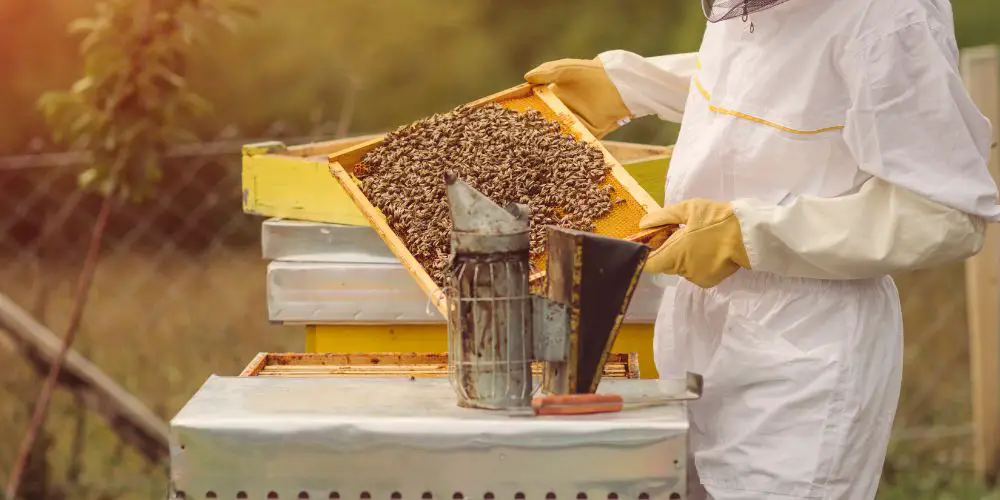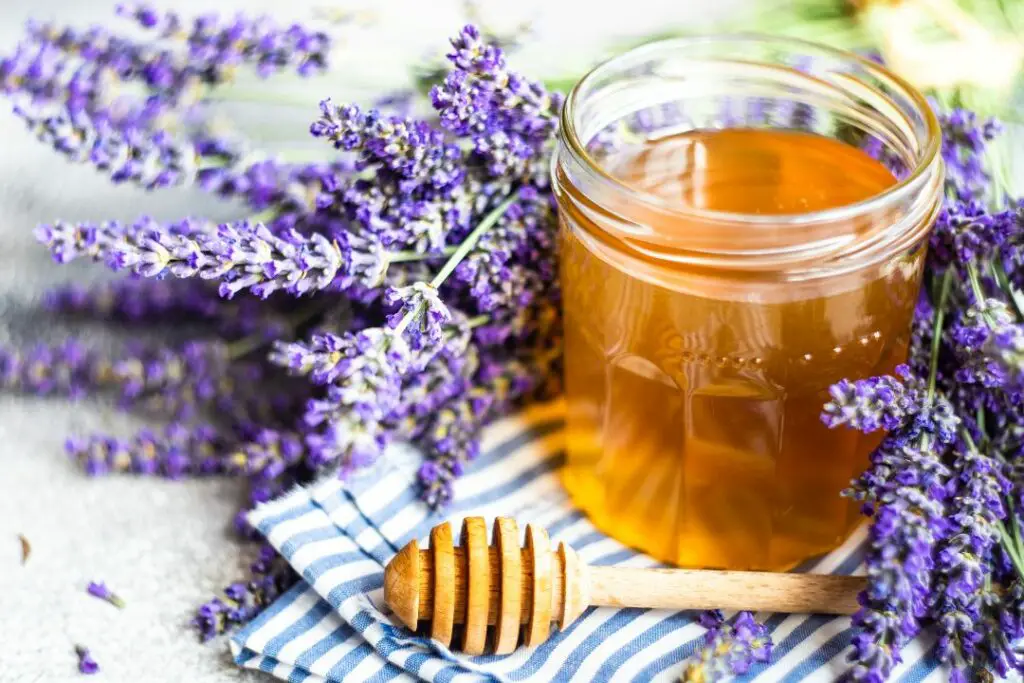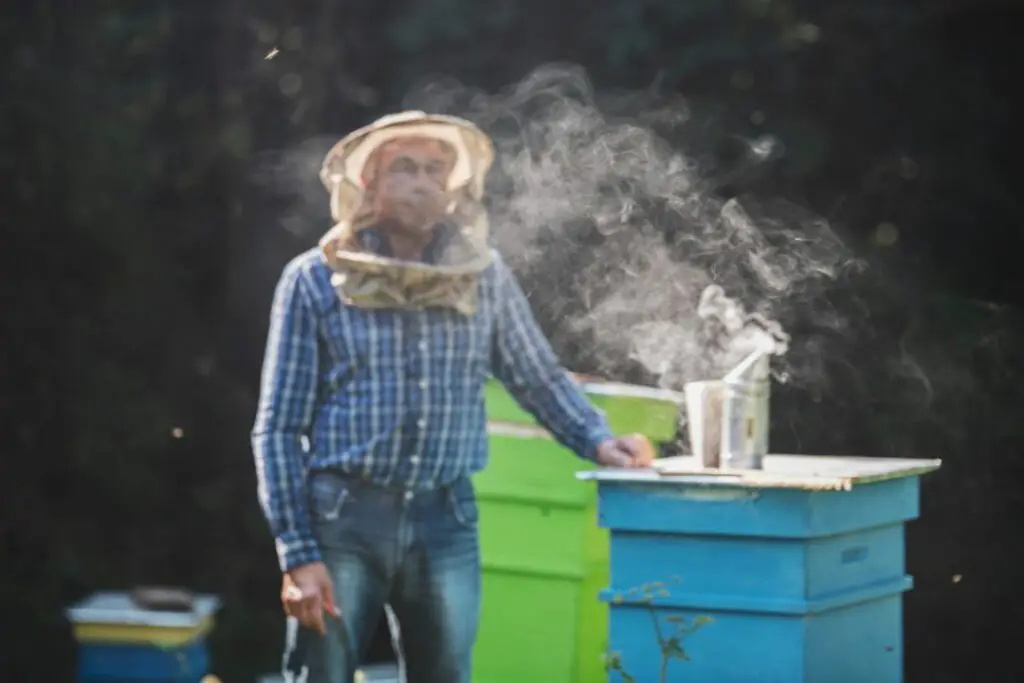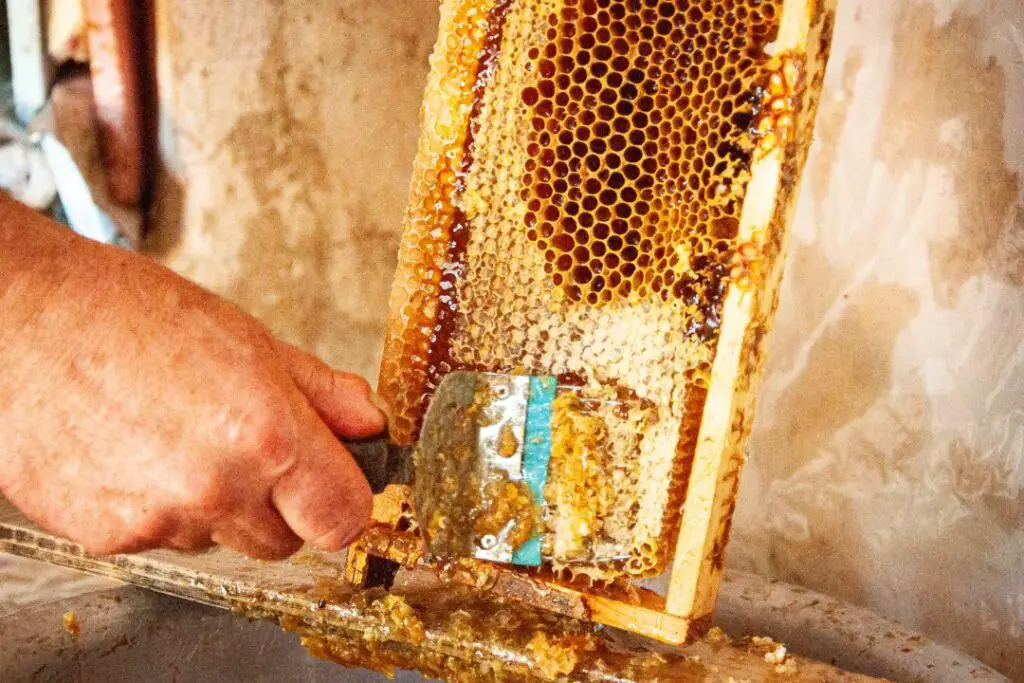Last updated on April 3rd, 2023 at 02:16 pm
Welcome to the fascinating world of beekeeping! As a (slightly) experienced beekeeper, I know that starting out in this hobby can be overwhelming, especially when it comes to choosing the right supplies.
There are so many options, from bee suits and hives to tools and accessories, that it can be difficult to know where to begin.
Thinking of keeping bees but don’t know how to start. Check out our in-depth guide on how to start beekeeping for beginners.
That’s why I’ve put together this guide to help beginners navigate the world of beekeeping supplies and find the best equipment to get started with.
Whether you’re interested in starting your own honeybee colony or want to learn more about these amazing creatures, this article will give you the information you need to get started on the right foot without spending a fortune.
10 Essential Beekeeping Supplies For Beginners & Newbies
We’ll take a look at all the gear you’ll need to safely keep happy, healthy bees.
Hive
As a beekeeper, a hive is a house or home for your bees. It’s where they live and work to create honey, wax, and raise their young.
A hive is usually made up of several wooden boxes stacked on top of each other, called supers. Each super contains frames, which are like picture frames that hold sheets of beeswax foundation that the bees use to build their comb.
*Helpful beginners tip – The comb is where the bees store their honey, pollen, and brood (developing bees).
A hive is important because it provides a safe and protected environment for the bees to live and work. It also helps you, the beekeeper, to manage and care for your bees in a way that keeps them healthy and productive. With a hive, you can check on your bees, add or remove supers as needed, and harvest honey and other products.
Overall, a hive is a crucial component of beekeeping, providing a home for your bees and allowing you to care for them in a way that benefits both the bees and the beekeeper.
When you’re just starting out the best type of hive is one that is easy to use and maintain. The Langstroth hive is the most commonly used hive in beekeeping. It consists of stackable wooden boxes called supers, which hold frames for the bees to build their comb.
The Langstroth hive is popular because it is easy to use and widely available, making it a great choice for beginners and relatively cheap to purchase, you can check out two that I recommend below:

- Pre-waxed bee hive parts save you time, effort, and money from having to paint each bee box.
- Dovetail joints provide a tight fit that will hold together for years and the wax will spread to fill gaps.
- Beginner beekeeping kit includes everything you need to start making your hive a home for bees.
- Made from fir wood, which prevents warping, twisting, shrinking, and expanding much better than pine.
- Kit includes a Wax Coated Solid Bottom Board, Telescoping Top Cover, Inner Cover, Queen Excluder, Entrance Reducer, etc.

- Includes everything you need to set up a bee hive, including an inner cover, telescoping top cover, medium honey super, solid bottom board, deep/medium frame plus foundation, and entrance reducer.
- 2 heavy wax-coated deep brood bee boxes, each with 16 high-quality pine frames that measure 9-9/16″ x 19″.
- 1 heavy wax-coated deep super bee box with 8 high-quality pine frames that measure 6-5/8″ x 19″.
- Includes a total of 24 pine frames and food-grade plastic foundations with real bee’s wax.
- You won’t need to use any toxic paint on these hives because they’re already wax-coated.
Bee suit or jacket
One of the most important pieces of equipment beekeepers need is a good quality suit or jacket. These protective garments are designed to keep you safe while you’re working with your bees by providing a barrier between you and any potential stings.
Beekeeping suits are made from lightweight, breathable cotton or polyester. They typically feature a zippered front, elastic cuffs, and a veil or hood which we’ll cover in the next section.
When choosing a beekeeping suit or jacket, it’s important to look for one that fits well and is comfortable to work in for extended periods.
It should be loose enough to allow you to move freely without any of the material being pulled tight to your skin (tight material only provide a thin layer between your skin and a potential sting).
Pro tip – Maske sure your beekeeping suit has good ventilation for hot summer days.
Overall, a good quality beekeeping suit or jacket is an essential piece of equipment for any beginner beekeeper. It will help to keep you safe and comfortable while you learn how to work with your bees.
Veil
The veil or hood is arguably the important part of your protective gear because it protects your face and head from bee stings, both these areas can cause breathing issues if you’re stung there.
It is typically made from a mesh fabric that allows you to see and breathe while keeping bees out. More experienced beekeepers who understand their hive’s temperament can often inspect their hive with just a veil in the knowledge they’ll be stung very little if at all.
Most suits and jackets will come with a detachable hood but if you opt for a separate hood make sure you don’t leave any gaps between your suit and the veil where a bee could enter.
Smoker
You can use a smoker to calm bees during hive inspections or honey harvesting. The smoke triggers a natural response that causes bees to consume honey making them less aggressive and more docile.
Smokers are normally made of stainless steel and consist of a firebox, bellows, and a nozzle. To use it you first light a fuel source like dried pine needles or burlap, in the firebox followed by pumping the bellows to blow air into the fire, creating smoke that is emitted through the nozzle.
Be careful not to use too much smoke or to hold the smoker too close to the bees. Instead, use small puffs of smoke and aim it at the entrance of the hive or under the cover to gently smoke the bees.
Protective beekeeping gloves
Beekeeping gloves are crucial to protect your hands from stings and other hazards while working with the hive.
They need to be made of durable materials such as leather or canvas and are designed to be thick enough to prevent bee stings while still allowing the beekeeper to handle the hive with ease.
*Some beekeeping gloves may have an extended cuff to provide extra protection for the wrist and forearm.
Inspect them regularly for any tears or damage and to replace them as needed. Gloves should be cleaned and sanitized regularly to prevent the spread of disease among colonies.
Bee brush
A bee brush is used by beekeepers to gently move bees from one area to another during hive inspections. It is typically made of soft, natural fibres like horsehair or hog bristle and is specifically designed to be gentle on the bee’s delicate bodies.
Bee brushes come in a variety of shapes and sizes, but they all serve the same purpose: to gently move bees. They’re particularly useful for removing bees from the surface of frames or for brushing bees off of the cover of the hive.
To use your brush, simply brush the bees gently in the direction you want them to go. It’s also important to avoid brushing bees too vigorously, as this can cause them to become agitated and potentially sting.
Feeder
A bee feeder provides supplemental food for bees when natural nectar sources are scarce. It’s particularly important during the fall and winter months when bees may struggle to forage for resources.
Feeders come in a variety of styles and designs, and depending on the one you go for they can be placed inside or outside the hive, depending on the type of feeder.
The most common type is the hive top feeder, it comes with a cover to prevent bees from drowning in the syrup and a mount for bees to access the food.
Another feeder is the entrance feeder, it’s placed at the entrance of the hive and filled and is particularly useful for smaller colonies and for feeding bees during the warmer months when it’s easier for them to leave the warmth of the hive.
Capping scratcher
A capping scratcher is used to remove the wax cappings that cover honeycomb cells. The cappings need to be removed in order to extract the delicious honey stored in the comb.
The capping scratcher itself consists of a metal or plastic handle with a small, pointed blade at the end. The blade is used to gently scratch the wax cappings off of the honeycomb cells, exposing the honey within.
It’s important to be gentle to avoid damaging the honeycomb cells.
*Pro tip – You can hold it at a slight angle and use it in a sawing motion to remove the cappings without damaging the cells underneath.
Capping scratchers are particularly useful for smaller operations and hobbyist beekeepers who may not have access to larger-scale honey-extracting equipment.
Hive tools
A hive tool is used for a variety of tasks such as prying open hives, separating frames, and scraping propolis and wax off hive components.
One end of the tool typically has a flat, pointed blade that can be used for prying apart hive components or scraping propolis and wax off of hive surfaces.
The other end is usually a curved, hooked shape that’s used to lift frames and loosen them from the hive.
As with the majority of beekeeping supplies, it’s important to use them carefully and avoid damaging the hive or injuring the bees.
*Pro tip – Hive tools should be cleaned and sanitized regularly to prevent the spread of disease and infection.
When choosing a hive tool, it’s important to look for one that is durable, comfortable to hold, and easy to use. Some hive tools may come with additional features, such as a scraper or a nail-pulling tool, which can be helpful for various hive maintenance tasks.
Overall, a hive tool is an indispensable tool for any beekeeper. It can make hive inspections and maintenance tasks easier and more efficient, while also helping to ensure the safety and health of your bees.
Queen catcher
A queen catcher is a very specialized tool used by beekeepers to capture and handle the queen bee without harming her.
The queen is the most important member of your colony, responsible for laying eggs and maintaining the population, and handling her safely is critical to the health of your hive.
Queen catchers come in a variety of shapes and sizes, but they all work by trapping the queen in a small compartment.
Personally, I’ve only used a “clip” catcher, which consists of two small plastic or metal clips that hold the queen securely but gently.
Another type of queen catcher is the “cage” catcher, which consists of a small cage that can be placed over the queen. The cage typically has small holes that allow the queen to breathe.
When using a queen catcher, it’s important to handle the queen gently and avoid stressing her. Queen catchers should be used sparingly and only when necessary, as excessive handling can disrupt the hive’s social structure and cause stress to the colony.
Conclusion
By investing in the right beekeeping supplies and equipment, beginners can embark on a fulfilling journey of beekeeping with ease and confidence.
Remember, bees are not only our little friends, but they also play a critical role in pollinating plants and crops, which is vital for our food supply. As you begin your beekeeping journey, keep in mind that your dedication and care will contribute to the health and well-being of these important creatures.
So, whether you’re a seasoned beekeeper or just starting out, always remember to approach beekeeping with love, patience, and respect.
And with the right beekeeping supplies at your disposal, you’ll be well on your way to enjoying the sweet rewards of this wonderful hobby.





















